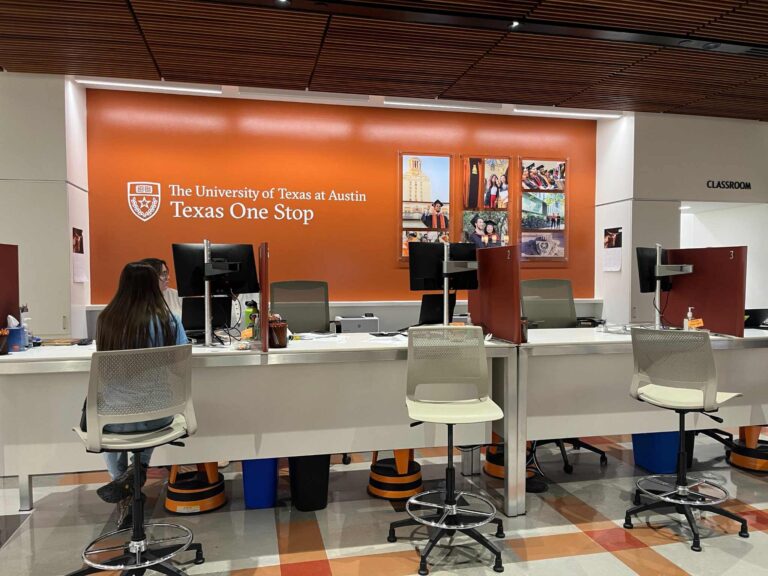Jennifer Vaden discusses how data drives successful collaboration between campus one-stops and home offices
One Stops within higher education institutions are established to centralize student services and minimize friction for students accessing assistance. Despite the centralization effort, the need for home offices or specialized service centers persists. For instance, services like financial aid often require specialized personnel to effectively address students’ needs. Hence, one-stops and home offices need to collaborate successfully to enhance overall efficiency for the sake of both students and staff.
However, as Jennifer Vaden, a seasoned higher education consultant with over a decade of experience with One Stops highlights, “Certain relationship challenges like a lack of trust, lack of communication, and lack of information sharing can arise and hinder successful collaboration between One Stops and home offices.” Issues such as staffing shortages and performance concerns can add further complexity to the relationship, she adds.

Forging and sustaining relationships between One Stops and home offices is no easy task. “At times, it can feel like ‘us versus them.’ This mindset can misguide both One Stop and home office staff, diverting their attention from the common goal of providing seamless, high-quality service to students and parents.”
So how can one stops and home offices improve their relationship and facilitate effective collaboration, all while prioritizing the needs of students?
Strengthening relationships and transparency by leveraging data
Data has emerged as a powerful tool for strengthening relationships and improving transparency across various departments, particularly between one-stops and home offices.
According to research conducted by Slack, more than 80% of workers express a desire for improved clarity on decision-making processes. Achieving this transparency is facilitated through the collection and sharing of data.
“If you collectively embrace technology that helps you share information and measure performance, the relationship runs smoother because everyone is on the same page.”

Integrating data-driven practices into the collaborative framework between one-stops and home offices not only strengthens their relationship but also empowers them to better serve the needs of students.
How data fosters trust through information sharing
Trust and communication are the foundation of a cooperative and collaborative working relationship between one-stops and home offices, says Vaden. To make this partnership really work, there needs to be clear and candid communication between leaders, whether that be through data information sharing or through open conversation. “That means being upfront about what each is responsible for and sharing both the good and the bad openly. This kind of authenticity and honesty not only builds trust but also makes it easier to work together to solve the challenging issues that inevitably arise,” she says.
Hence, data holds the power to profoundly reshape this partnership, transitioning discussions from anecdotes to evidence-based insights. “It offers a clearer understanding of the actual situation,” notes Vaden. “By prioritizing factual information, we can enhance decision-making, overcome misunderstandings, and collaborate more efficiently.” Moreover, leveraging data enables progress tracking, identifying areas for improvement, and adapting strategies accordingly. All of these support continuous growth and success in collaborative endeavors.
In one of Vaden’s previous roles, her team established a committee to align their efforts and prioritize giving top-notch service. “From the outset, we set a service level target: addressing escalated student and parent inquiries within three business days,” she says. “Upon implementing data tracking, we witnessed significant enhancements in our resolution times across the board.”
Her outlined approach not only cultivates trust but also empowers teams to make informed decisions, improve efficiency, and deliver exceptional services to students.
Structuring effective communication and collaboration
When fostering effective communication and collaboration between home offices and one-stops, Vaden underscores the significance of establishing structured frameworks for information sharing and data insights. She stresses the necessity of creating a robust structure to facilitate the exchange of information and data insights: “When you are trying to improve communication and collaboration, it’s important to build out a structure to promote the sharing of information.”
An effective strategy, as Vaden points out, involves scheduling regular meetings among leadership from both entities. In these meetings, goals, high-level data, and service-level agreements (SLAs) are thoroughly discussed to ensure alignment and progress tracking.
She additionally suggests introducing an impartial facilitator from outside these departments to enhance engagement and decision-making processes.” This helps everyone fully engage in discussion and decision-making.”
“Using a shared set of digital tools to share information and data in real-time, or close to it, is vital,” Vaden also notes. By utilizing these tools, accessibility and timeliness for all involved parties are ensured.

Technology serves as the ultimate engine for data collection and relationship enhancement in the collaborative landscape between campus one-stops and home offices. As Vaden points out, integrating smart technology (like Queue Management Systems) can revolutionize how teams operate. “These tools help us understand what students need in real-time and make it easier to address those needs quickly, while also handling routine tasks, allowing us to focus on providing a better experience for everyone.”
In addition to these proactive measures, the importance of documenting clear agreements on collaboration protocols cannot be overemphasized. She states that “Documenting clear agreements on how you’re going to work together and regularly sharing updates on how things are going can help keep everyone in the loop.” This approach, she says, provides clarity regarding roles, responsibilities, and expectations, ultimately enhancing operational fluidity and cohesion.
By embracing such data-driven solutions, organizations can harness the power of shared information to foster transparency, streamline communication, and build trust. As Vaden emphasizes, establishing structured frameworks for information sharing and utilizing digital tools enables teams to stay aligned, address challenges efficiently, and adapt strategies effectively.







